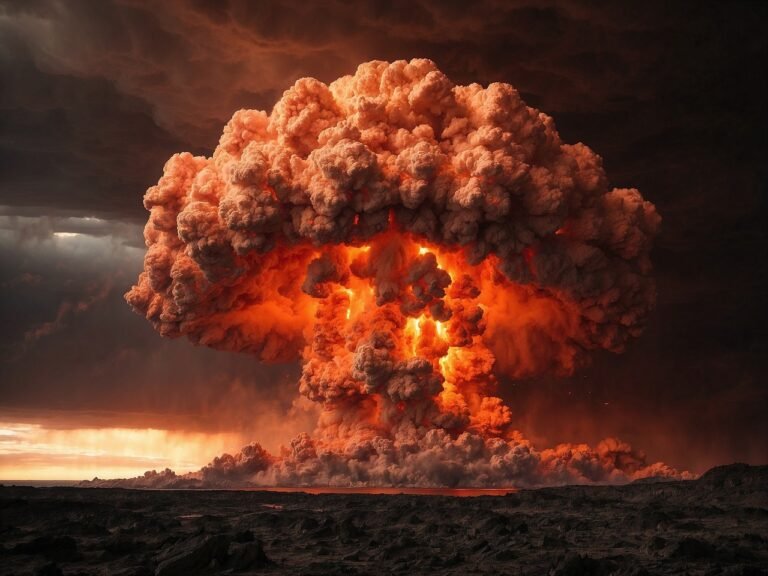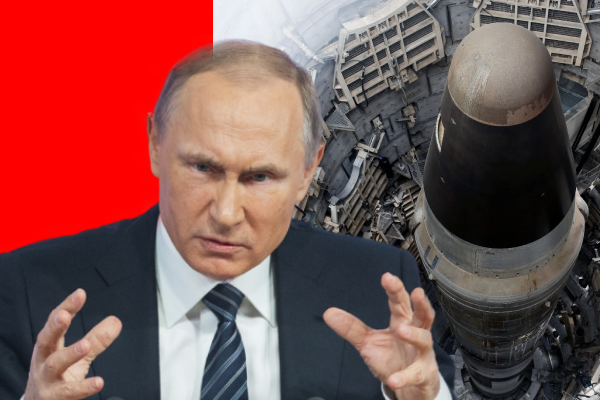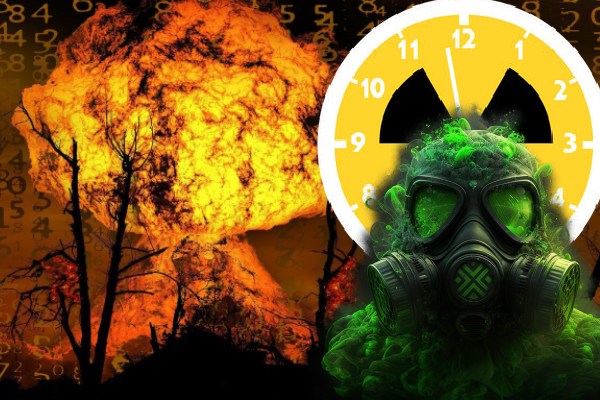In the realm of global geopolitics, few concepts evoke as much intrigue and apprehension as the notion of nuclear deterrence. Among the various nuclear arsenals around the world, the Russian Dead Hand system stands out as a mysterious and controversial relic from the Cold War era. This blog aims to delve into the intricacies of the Dead Hand system, exploring its origins, capabilities, and the ongoing debate surrounding its role in modern geopolitics
Table of Contents
The Cold War Relics
The Dead Hand system, officially known as Perimeter, was developed by the Soviet Union during the Cold War as a response to the ever-present threat of a nuclear strike from the United States. Born out of the mutual distrust and tension between the superpowers, Perimeter was designed to ensure the retaliatory capability of the Soviet Union even in the event of a decapitating first strike.
The roots of the Dead Hand system can be traced back to the 1970s when the Soviet Union faced growing concerns about the vulnerability of its leadership and communication infrastructure. The fear of a surprise nuclear attack prompted the development of a fail-deadly system that could autonomously launch a retaliatory strike without requiring direct human input.
At its core, the Dead Hand system relies on a network of sensors to detect specific indicators of a nuclear attack, such as seismic activity, radiation levels, and electromagnetic pulses. In the event that these indicators suggest a massive nuclear strike, Perimeter would automatically initiate the launch sequence for intercontinental ballistic missiles (ICBMs) without awaiting human authorization.
How Dead Hand Works?
Understanding the operational mechanics of the Dead Hand system requires a closer look at its key components and the intricate web of sensors and communication channels that form its backbone.
- Sensors and Detection:
Perimeter employs an array of ground-based and satellite-based sensors to monitor various signals associated with a nuclear attack. Seismic sensors detect ground tremors caused by nuclear explosions, while radiation detectors identify abnormal levels of radiation. Additionally, electromagnetic pulse (EMP) sensors pick up the telltale signs of a nuclear detonation in the upper atmosphere.
- Communication Network:
The heart of the Dead Hand system lies in its robust communication network. The system relies on a complex array of communication channels, including landlines, radio links, and satellite connections. These redundant channels ensure that Perimeter can receive and process information from a variety of sources, minimizing the risk of a communication breakdown.
- Decision-Making Algorithm:
The decision-making algorithm of Dead Hand is shrouded in secrecy, but it is believed to incorporate a sophisticated set of criteria for assessing the credibility of an incoming threat. Factors such as the number of detected explosions, their locations, and the magnitude of the associated signals are likely taken into account. The system is designed to differentiate between a genuine nuclear attack and false alarms to avoid unnecessary launches.
Dead Hand can Bring dead to World
While the Dead Hand system was conceived as a safeguard against a decapitating first strike, it has sparked considerable controversy and debate both within Russia and internationally.
- Lack of Transparency:
One of the primary concerns surrounding the Dead Hand system is the lack of transparency regarding its current status and capabilities. The Russian government has been tight-lipped about the specifics of Perimeter, leading to speculation and uncertainty among analysts and policymakers.
- Risks of Autonomous Systems:
Critics argue that relying on an autonomous system to make decisions about launching nuclear weapons introduces significant risks. The potential for false alarms, technical malfunctions, or misinterpretation of data raises the specter of unintended nuclear conflict.
- Impact on Strategic Stability:
The existence of the Dead Hand system has implications for the broader concept of strategic stability. Some argue that the system could contribute to a more stable deterrence framework by ensuring a credible second-strike capability. Others contend that the potential for misunderstandings and unintended consequences makes the system a destabilizing force.

Where is Dead Hand System Located?
The exact location of the Dead Hand system, officially known as Perimeter, is a closely guarded secret. The Russian government has not publicly disclosed the specific details of the system’s physical location or the facilities associated with it. This secrecy is intentional and is part of the broader strategy to enhance the system’s security and effectiveness.
During the Cold War, the Soviet Union took significant measures to protect its strategic assets, including nuclear command and control systems, from potential attacks or espionage. The Dead Hand system, designed to ensure a retaliatory response in the event of a nuclear strike, is likely housed in secure, hardened facilities to withstand various forms of physical and electronic threats.
The lack of information about the location of the Dead Hand system adds an additional layer of complexity for any potential adversaries, making it challenging to develop targeted strategies for disabling or disrupting the system. The emphasis on secrecy and security underscores the importance placed on maintaining the system’s reliability and effectiveness as a component of Russia’s nuclear deterrence posture

Modernizing DETERRENCE in The 21st Century
As the global geopolitical landscape evolves, so too must the strategies and technologies that underpin nuclear deterrence. The Dead Hand system, while rooted in the Cold War, prompts important questions about the role of autonomous systems in contemporary nuclear arsenals.
- Advances in Technology:
Advancements in technology have the potential to enhance the reliability and accuracy of autonomous systems. Machine learning algorithms, improved sensor capabilities, and faster communication networks could address some of the concerns associated with the Dead Hand system.
- International Dialogue:
The existence of the Dead Hand system underscores the need for open and constructive dialogue on nuclear deterrence policies. Transparency and communication between nuclear-armed states can help build trust and reduce the likelihood of misunderstandings that could escalate into a nuclear conflict.
- Ethical Considerations:
The development and deployment of autonomous systems in nuclear arsenals raise ethical questions about the delegation of life-and-death decisions to machines. The international community must grapple with these ethical considerations as it navigates the future of nuclear deterrence.
Conclusion
The Russian Dead Hand nuclear system, born out of Cold War anxieties, continues to cast a shadow over contemporary discussions on nuclear deterrence. Its mysterious nature, coupled with the potential risks associated with autonomous decision-making, makes it a subject of ongoing debate and concern. As the world grapples with the challenges of the 21st century, addressing the role of systems like Dead Hand is crucial for shaping a stable and secure global future.

